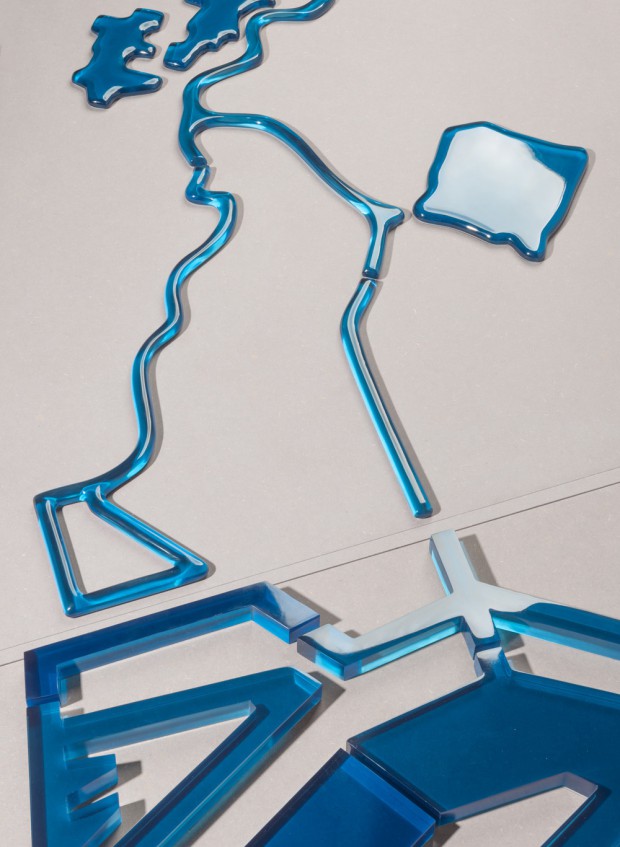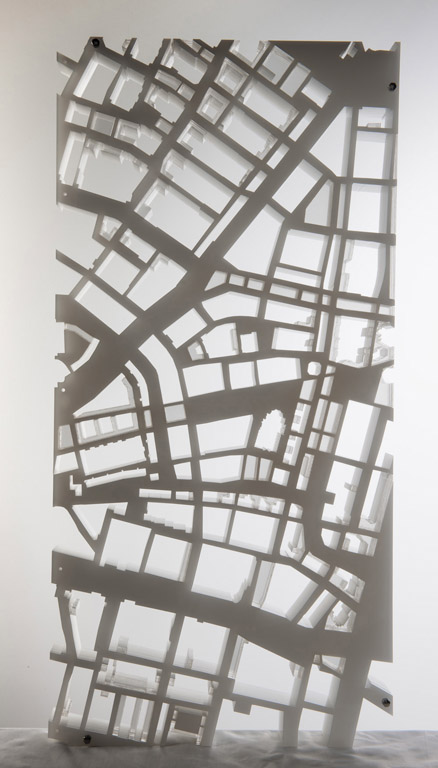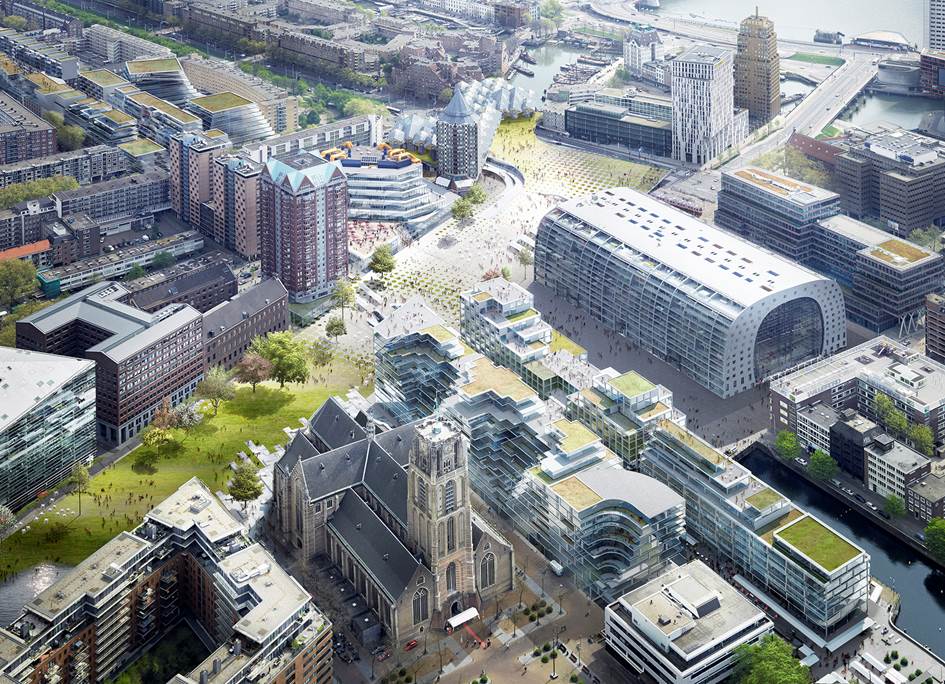The fictional assignment formulated by the jury of the Prix de Rome focused on the Hoogstraat in Rotterdam. The shortlist consisted of 8 candidates: Steven Delva, Anne Holtrop, Florian Idenburg, Marieke Kums, Kees Lokman, Donna van Milligen Bielke, Jasper Nijveldt, Tim Prins and the duo XML (Max Cohen de Lara and David Mulder). They were given 3 months to work on the assignment, which was then shown at Het Nieuwe Instituut.
Architect Donna van Milligen Bielke won the Prix de Rome 2014 with the Cabinet of Curiosities design.
Winner Donna van Milligen Bielke
In her analysis of the assignment for the Prix de Rome, Van Milligen Bielke notes that architecture and urban planning hardly complement each other in the Rotterdam city centre. In her view, therefore, the task is not to separate architecture and urban planning, but rather to integrate them. Her project is based on the search for a homogeneous urban planner and an architectural counterpart to the Rotterdam city centre. A hybrid medium that is on a different scale level than the voluminous buildings present and that creates a multitude of precise public spaces.

Steven Delva
With his plan for the Prix de Rome, Delva wants to make it unequivocally clear that the city is more than ever the field of activity of the landscape architect. Understanding local systems and connecting them to larger scale levels forms the foundation for this.

Florian Idenburg
According to Idenburg, now is the time to shed light on the future of the city through fiction. The starting point is that the heart of Rotterdam has yet to recover its soul since the bombing of May 1940.

Marieke Kums
Because developments in Rotterdam in the short term are mainly driven by the user economy, it is important that there is an overarching vision for this. The city must be given the opportunity to adapt to changing needs, while at the same time retaining its individuality; that is basically what Kums aims for with her entry for the Prix de Rome.

Kees Lokman
For the Prix de Rome assignment, Lokman focused on strategic interventions. Water plays the leading role in this. His design focuses in particular on the Binnenrotte, the link between the location and the larger urban structure. Outside the city, the Rotte still influences the pattern of the landscape, with its greenhouses and ribbon development.

Jasper Nijveldt
Nijveldt’s aim is to make the qualities of the urban planning profession relevant again for the city. He believes that every urban plan can only distinguish itself when it is spatially translated into public and private spaces. He finds a lot of inspiration in nineteenth-century urban planning.

Tim Prins
The basis of his plan consists of mapping out the ownership relationships in the Laurenskwartier. After the bombing in the Second World War, the municipality expropriated the land, a large part of which is now owned by a few investors. By turning the entire area ‘cadastral inside out’, he wants to provide insight into the positions of power that have shaped the neighbourhood.

XML
The project developed by XML for the Prix de Rome focuses on an alternative urbanization scenario for Rotterdam. “We propose to bend the current high-rise program in the city and focus it on the far-reaching densification of the Laurenskwartier into a horizontal urbanity around the convergence of two lines: landscape and urban life.”
The jury
The jury of the Prix de Rome 2014 consisted of: Adriaan Geuze (winner Prix de Rome 1990, landscape architect and partner West 8), William Lim (director CL3 Architects Ltd, architect and architect from Hong Kong), Ellen van Loon (architect and partner OMA), Saskia van Stein (artistic director and curator Bureau Europa), Cathelijne Nuijsink (critic, writer on architecture and design) and chair Birgit Donker (director Mondriaan Fund).
